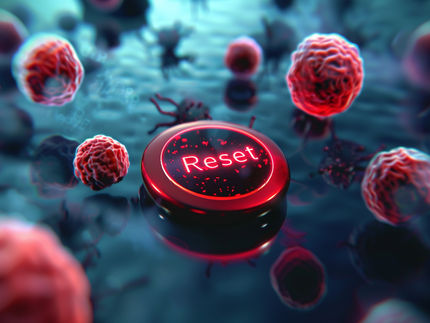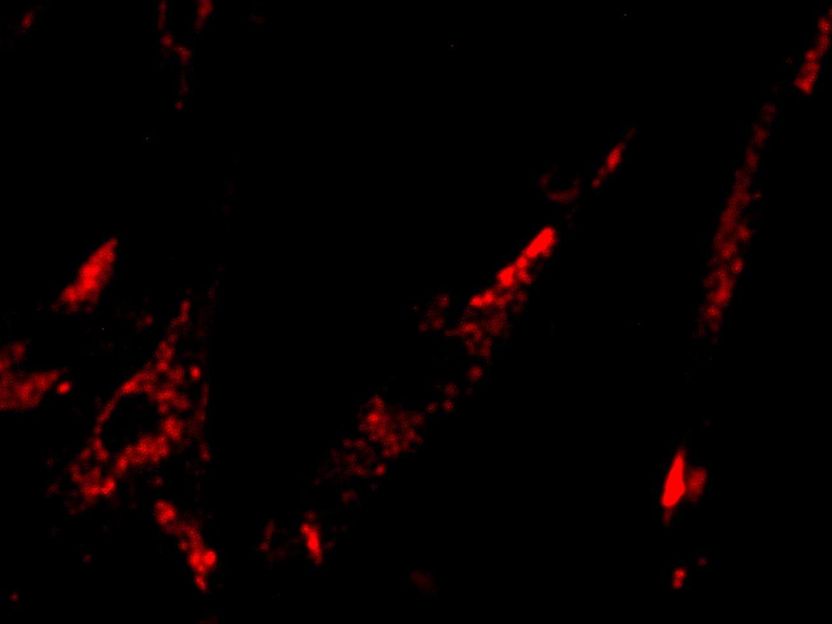New approach against chronic inflammation
The researchers got help from an alpaca
Researchers at the Universities of Bonn and Sao Paulo have succeeded in mitigating chronic inflammation in mice using customized "mini-antibodies." These nanobodies enabled them to dissolve molecular complexes in tissue that normally activate the immune system. The nanobodies produced may in future help to slow down unwanted inflammatory reactions that cause diseases such as arthritis or neurodegeneration. The study is published in the journal EMBO Molecular Medicine.

ASC specks - shown here in different colors - are large complexes of many copies of the ASC protein. They can cause immense damage in the tissue.
© AG Franklin/ Universität Bonn
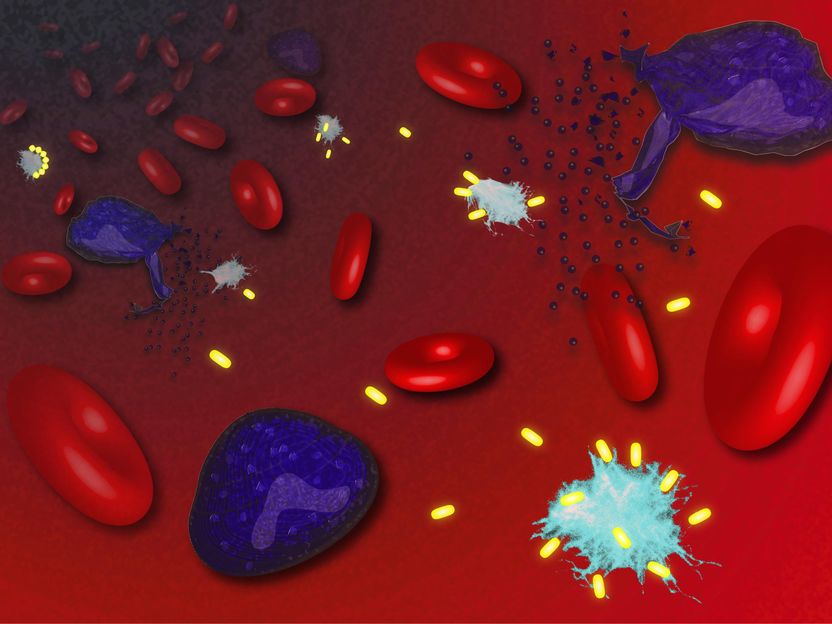
When infected cells (purple) burst, they release ASC specks (light blue). The nanobodies (yellow) used in the study ensure the breakdown of the specks - inflammation decreases.
© AG Franklin/ Universität Bonn
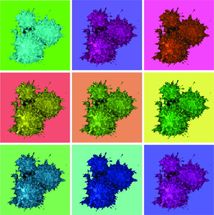
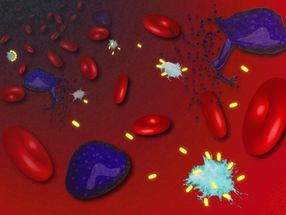
Not only the villas of the rich and famous have a direct line to the police. The cells in our body also have a sophisticated alarm system, the inflammasome. Its central component is the so-called ASC protein. In the event of danger, such as an attack by a pathogen, many of these molecules join together to form a large complex, the ASC speck. This ensures two things: First, its activity causes the cell to accumulate large quantities of messenger substances, which can be used to summon the help of the immune system. And secondly, numerous pores are formed in the cell membrane through which these alarm molecules can reach the outside and fulfill their task.
Last cry for help from the dying cell
These holes ultimately lead to the demise of the cell: "At some point, the cell basically explodes and empties its entire contents into the tissue," explains Prof. Dr. Bernardo Franklin of the Institute of Innate Immunity at the University Hospital Bonn. "The messenger substances that are now abruptly released then act like a last great cry for help. This triggers the immune system to mount a strong inflammatory response that contains the infection." That is why this mechanism of innate immune defense is hugely important.
However, in this process, ASC specks also accumulate in the tissue and may persist there for a long time. "We have now been able to show in mice that their activity activates the immune system even after the threat has been averted," Franklin says. "This can result in chronic inflammation, which severely damages the tissue." Together with researchers from the University of Sao Paulo, Franklin's team has succeeded in preventing this undesirable effect. They used so-called nanobodies for this purpose.
These agents are antibody fragments with a very simple structure. "In collaboration with Prof. Dr. Florian Schmidt from the Institute of Innate Immunity, we generated nanobodies that specifically target ASC and can dissolve the specks," explains Franklin's collaborator Dr. Damien Bertheloot. The researchers got help from an alpaca: They injected the animal with the ASC protein so that it developed matching antibodies. Some of the alpaca antibodies have a very simple structure. This makes it possible to produce and test fragments of these antibodies as so-called nanobodies.
Rheumatism and gout symptoms alleviated in mice
The researchers were able to obtain the genetic information for the ASC nanobodies from blood samples of the animal using a complex technique. "We then incorporated this genetic makeup into bacteria so that we could have them produce the nanobody in large quantities," Bertheloot explains. The team demonstrated that the compound can dissolve ASC specks using human cell cultures as well as mice. "The mice in our experiments have rheumatoid and gout-like symptoms," Bertheloot explains. "After administration of the nanobody, the inflammation and also the general health of the rodents improved significantly."
Nanobodies are very small compared to normal antibodies. They are therefore excellent for breaking up such molecular complexes. This is because they can still reach sites that would be too cramped for large agents. Moreover, normal antibodies provide additional stimulation to the immune system and can therefore exacerbate inflammation - a property that nanobodies lack.
The results are also interesting for another reason: Studies indicate that ASC specks can also cause significant damage to the brain. There, they seem to serve as a kind of "crystallization nucleus" for the Aß protein. In the brains of Alzheimer's patients, Aß clumps together to form large protein complexes called plaques. Presumably, ASC specks can trigger this clumping. "So perhaps it's possible to slow down this process with the help of our nanobodies," Franklin hopes. "We now plan to investigate this possibility in a follow-up study." Bernardo Franklin is a member of the ImmunoSensation2 Cluster of Excellence at the University of Bonn.
At the same time, however, he warns against overly high expectations: Even in the ideal case, it will be years before the results might translate into new drugs.

